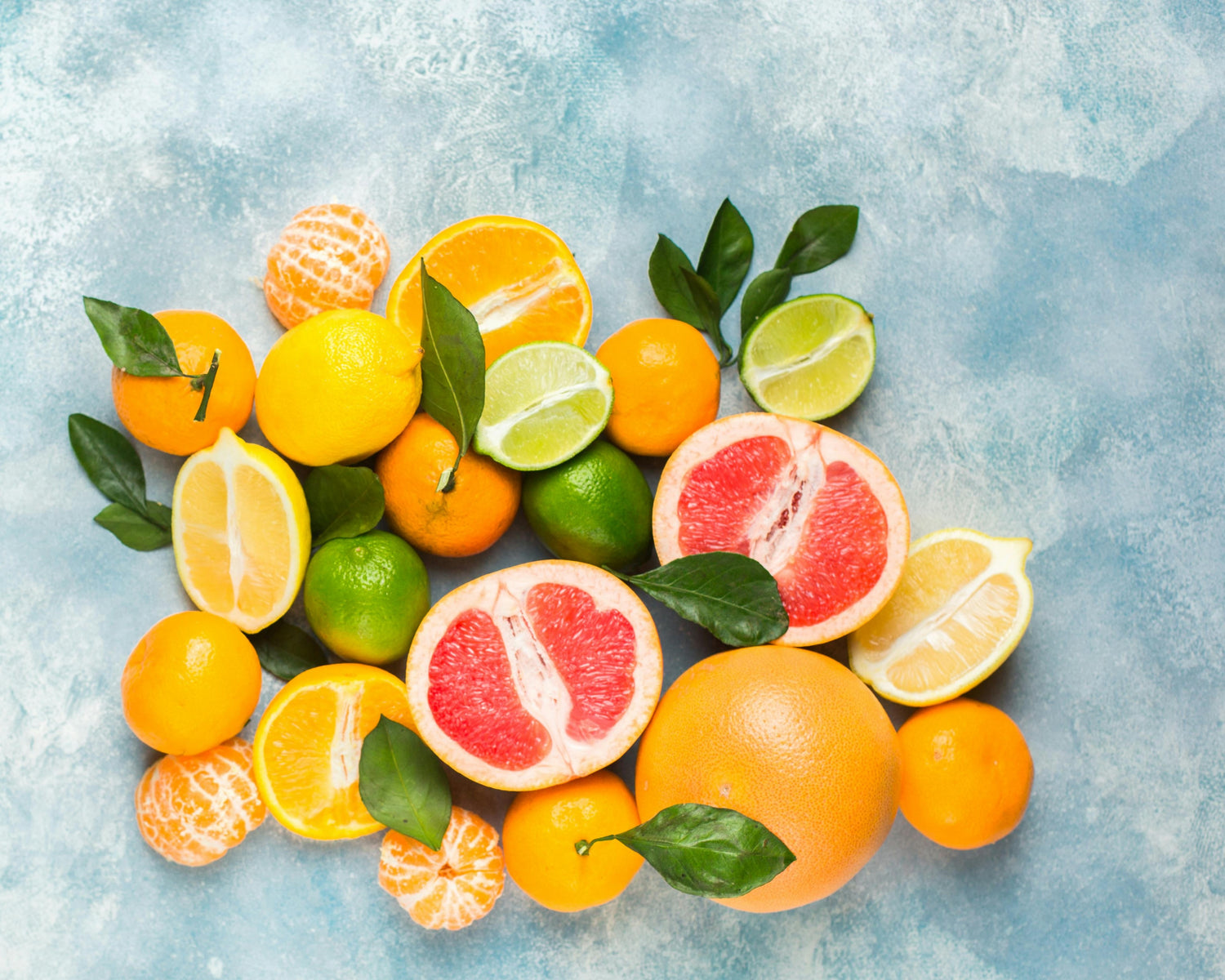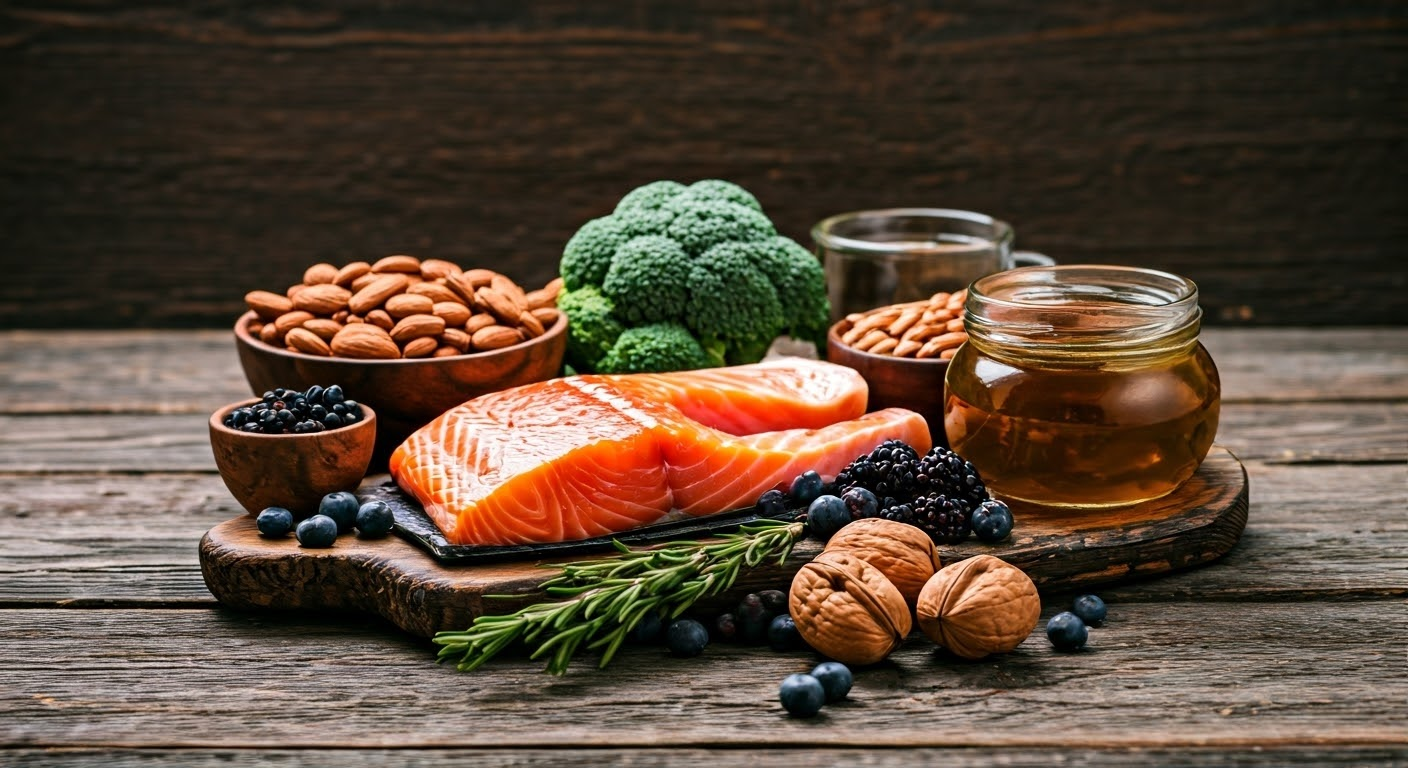Key Highlights
- Heavy metal exposure from food is a growing concern that can have long-term health impacts.
- Certain foods, like some fish, rice, leafy greens, and chocolate, are more prone to heavy metal contamination.
- Understanding the sources of heavy metals and their potential health risks empowers you to make informed dietary choices.
- This blog post explores high-risk foods and safe consumption practices to minimize exposure to heavy metals.
- You'll also find practical strategies for supporting your body's natural detoxification processes.
Introduction
Heavy metal exposure is a rising worry today. Many food products can have these harmful metals. While not all heavy metals are dangerous, some, like lead with a high concentration of lead, mercury, and arsenic, can cause serious health issues. This blog post is here to help you. You will learn how to make safer food choices by understanding the risks of heavy metal exposure that can remain for a long time, and find ways to reduce the metals you take in.
Understanding Heavy Metals and Their Impact on Health
Heavy metals are found naturally in the Earth's crust. However, due to human activities such as industrial pollution and mining, their amounts in our environment and food have greatly risen. These metals can pollute the soil, water, and air. Eventually, they can end up in the food we eat.
Our bodies need small amounts of certain heavy metals. But high levels of heavy metals can cause health problems, including metabolic disorders. These issues can vary from mild symptoms like headaches and tiredness to serious conditions like organ damage or developmental issues in children. It is important to know the risks and sources of heavy metal exposure to help protect your health.
Defining Heavy Metals and Their Toxicity
You may be asking what heavy metal toxicity really means. It's simply the bad effects from having toxic metals, including the most common metals like lead, mercury, arsenic, cadmium, and aluminum, build up in your body over time. Some heavy metals, the type of metal like iron and zinc are good for our health, but only in small amounts. On the other hand, metals like lead, mercury, arsenic, cadmium, and aluminum can be harmful even in low amounts.
These toxic metals can mess with how our bodies work. They can throw off hormone balance, hurt the nervous system, damage organs like the kidneys and liver, and even raise the chance of getting certain types of cancer due to oxidative stress. Kids are at a greater risk for heavy metal toxicity because their bodies and minds are still developing.
The good news is you can do things to lower your exposure to these harmful metals and keep your family safe. By knowing which foods are high-risk and following safe eating tips, you can really cut down your chances of getting affected.
How Heavy Metals Enter Our Food Supply
Heavy metals can get into our food in different ways. One main way is through the food chain. Plants take up heavy metals from contaminated soil and water supplies, which can originate from the earth’s crust. These metals build up in their tissues. Then, animals eat these plants or drink the dirty water, and they gather more heavy metals in their bodies. When we eat these plants or animals, we also eat the heavy metals.
Industrial pollution in the United States is a big reason why our soil and water get contaminated. The Department of Agriculture (USDA) monitors this issue, as factories often dump wastewater with heavy metals, harming the nearby area. Pesticides can also contain heavy metals, which can taint crops and enter the food chain. The Environmental Protection Agency (EPA) has limits for the heavy metal content in our water and food. However, keeping track of these levels throughout the whole food supply chain is very difficult.
Also, heavy metals can creep into our food during processing and packaging. Some food additives and colorings might have small amounts of heavy metals, exposing us to them through processed foods. It is important to know about these hidden sources and try to eat less heavily processed food.
Identifying Common Heavy Metals in Foods
Knowing the heavy metals that show up in food is important for understanding the risks we might face from what we eat. While many heavy metals can end up in our food, some of the most worrying ones are lead, mercury, arsenic, cadmium, and aluminum.
These heavy metals can affect our health in different ways. Some can harm our nervous system, while others can affect how our organs work. A few can even increase the risk of cancer. Let’s examine these heavy metals closer. We will learn about their specific effects and find out which foods we should be careful with.
Lead, Mercury, and Arsenic: What You Need to Know
Lead is a very dangerous heavy metal. It can build up in the body over time, and this can affect many organs. The brain and nervous system are especially at risk. High levels of lead can harm thinking skills and cause delays in children's development. Adults can also face various health issues due to lead.
Next is mercury, which is often found in seafood as methylmercury. It tends to collect in larger fish that eat smaller ones. Eating these fish a lot can be risky for people. High mercury levels can hurt the nervous system. This can cause issues with coordination, vision, and even hearing.
Finally, arsenic mainly appears in food in its inorganic form. This can be very harmful to health. We are now more worried about the levels of arsenic in our food. This concern comes from its use in some pesticides and being present in some groundwater used for irrigation. Long-term exposure to arsenic can lead to various health issues, including cancers, skin problems, and heart disease.
Cadmium and Aluminum: Lesser-Known Dangers
Cadmium is a harmful heavy metal that many people ignore. It can build up in the kidneys and bones. This may lead to kidney problems, weak bones, and a higher chance of fractures. You can often find cadmium in bad soil. It gets into crops, such as leafy greens, grains, and root vegetables, and ends up in our food.
Aluminum is a common metal found in many everyday items, like pots and food additives. Although aluminum is not as toxic as some other heavy metals, it can accumulate in the body, especially the brain. Some studies hint at a possible link between long-term aluminum exposure and diseases like Alzheimer's, but more research is needed to confirm this link.
Knowing about these hidden dangers helps you make good choices about the foods you eat and their heavy metal content. It is important to stay informed and choose wisely.
High-Risk Foods for Heavy Metal Exposure
Now that we talked about common heavy metals and their health risks, let's look at some foods that can have a higher risk of heavy metal contamination. While you may not always need to avoid these foods completely, knowing their risks helps you make better choices and eat them in moderation.
A balanced diet is important. Eating higher-risk foods sometimes may not cause serious health issues for most people. However, it's best to keep it moderate. This is especially true if you worry about heavy metal exposure or have health problems already.
Seafood: Mercury and Lead Concentrations
Seafood is a good source of protein and omega-3 fatty acids. However, it can also have high levels of heavy metals, especially mercury. Larger types of fish at the top of the food chain, like tuna, swordfish, and king mackerel, often have more mercury. It is best to eat less of these fish.
On the other hand, smaller fish, like sardines, anchovies, and wild-caught salmon, have lower mercury levels. These are safer choices. When picking seafood, choosing sustainably sourced options can help reduce your exposure to heavy metals.
Here’s a quick guide:
Fish with Higher Mercury Levels (Eat Less):
- Shark
- Swordfish
- King Mackerel
- Tilefish
Fish with Lower Mercury Levels (Safer Choices):
- Salmon
- Sardines
- Anchovies
- Shrimp
Rice and Rice Products: Arsenic Levels
Rice is a key food for many people around the world. It easily absorbs arsenic from soil and water, more than other grains. White rice is processed to remove some outer parts that contain arsenic. In contrast, brown rice keeps these layers, which may lead to higher levels of heavy metals, raising concerns especially with products like infant rice cereal. To mitigate these risks, consider substituting white or brown rice with alternatives like cauliflower rice.
Rice-based foods like rice cereal, rice milk, and rice flour can also have arsenic. Babies and kids are especially at risk from the bad effects of arsenic. So, it's a good idea to use different grains for their meals and snacks.
To lower arsenic levels, you can choose rice that grows in areas with less arsenic. Rinsing rice well before cooking it and using more water can also help. But, looking into other grains like quinoa, millet, or barley in your diet can really help reduce arsenic from rice.
Leafy Greens: Absorbers of Various Heavy Metals
Leafy greens are known for being very healthy. However, they can soak up heavy metals from the soil, mostly lead and cadmium. It is important to eat a variety of vegetables. This helps lower the risk of heavy metal exposure.
Try rotating your greens. Include options like kale, spinach, lettuce, sweet potatoes, and collard greens. This way, you can get a good mix of nutrients. It also helps to lower the chance of heavy metal buildup from one source. Choosing organic leafy greens is a smart choice too. Organic farming typically does not use chemical pesticides and fertilizers that can contain heavy metals.
Also, make sure to wash your leafy greens well before eating them. This is necessary, whether they are conventionally grown or organic. It can help remove dirt, dust, or any leftover traces of heavy metals.
Chocolate: Hidden Sources of Lead and Cadmium
Chocolate is a favorite treat for many people, but it can contain hidden lead and cadmium. These heavy metals can get into chocolate from the soil where cacao beans are grown. Dark chocolate, which has more cacao, has health benefits, but it’s important to eat it in moderation and watch the lead levels.
To lower your risk, choose trusted chocolate brands. Look for those that get cacao beans from areas with low heavy metal levels and that test their products carefully. Some organizations and consumer groups test and share results on heavy metal levels in chocolate. This helps you make informed choices.
Keep in mind that moderation is key with chocolate, just like with anything else you enjoy. Eating a piece of dark chocolate from time to time should not be a major health concern for most. However, being aware of its possible heavy metal content helps you consume it thoughtfully.
Mitigating Risks: Safe Consumption Practices
Knowing which foods may have heavy metal contamination is important. It's also crucial to practice safe ways of eating to lower your risk. Simple and effective tips can help you reduce your heavy metal exposure from food. This way, you can enjoy a healthy diet without too much worry.
You don’t have to make big changes to your diet. Instead, these tips focus on being careful with what you eat and making smart choices. By using these easy tips, you can manage your health better and lower your heavy metal exposure from your food.
Choosing Low-Risk Seafood Options
To enjoy the health benefits of seafood while keeping the mercury levels low, it's important to make smart choices. Start by choosing seafood types that are known to have lower mercury levels. Smaller fish such as sardines, anchovies, and wild-caught salmon are great options.
You should also limit your intake of high-risk fish like shark, swordfish, and king mackerel. These larger fish often have higher mercury due to their place in the food chain.
Choosing seafood that is sustainably sourced from trusted suppliers can help too. Look for certifications and labels that show responsible fishing and checks for heavy metal contamination. By being careful with your seafood picks, you can enjoy this healthy food group while facing fewer risks.
Safe Rice Eating Habits and Alternatives
Rice is a common food for many people. However, there are worries about arsenic levels in rice. Luckily, you can make small changes when preparing rice to lower the arsenic amount. Rinsing rice well with running water before you cook it can remove a lot of surface arsenic.
Using more water when cooking rice and throwing out the extra water afterward can also help cut down the arsenic in the rice you eat. Additionally, picking other grains like quinoa, millet, and barley more often can help lower your exposure to arsenic.
These ancient grains are tasty and flexible. They also have great nutrition, making them good for a diet focused on reducing heavy metal intake. By following these easy tips, you can enjoy rice without worrying too much about arsenic levels.
Washing and Preparing Vegetables to Reduce Exposure
Washing and preparing vegetables properly is important to lower heavy metal exposure. Always wash vegetables under running water before you eat them. This helps to remove dirt, dust, and any residues that may have heavy metals.
Peeling vegetables such as carrots and potatoes is a good way to cut down on your intake of heavy metals, as these metals tend to collect in the skin. For leafy greens, taking off the outer leaves can also help, since heavy metals are more likely to be there.
It is smart to choose organic vegetables whenever you can. Organic farming usually does not use synthetic pesticides and fertilizers that often contain heavy metals. By using these simple preparation methods, you can make sure your vegetables are healthy and safe to eat.
The Role of Organic Foods in Heavy Metal Exposure
The question about whether organic foods are safer when it comes to heavy metal exposure often comes up. Organic farming usually does not allow synthetic pesticides and fertilizers that may have heavy metals. Still, having organic certification does not mean there is no heavy metal content in food.
Heavy metals can still be found in the environment. They can contaminate soil and water, no matter how the food is grown. However, choosing organic foods can help lower your overall heavy metal exposure. This choice reduces one major way of contamination.
Are Organic Foods Safer?
Organic foods are becoming very popular. People are more aware of what they eat. Many believe that organic foods are safer and healthier because they follow strict rules for growing. Although being organic does not mean there is no heavy metal content, it usually means less chance of certain contaminations.
Organic farming does not allow the use of synthetic pesticides, herbicides, and fertilizers. These can add to heavy metal contamination found in regular foods. By choosing organic, you lower your chances of being exposed to heavy metals from these sources. Still, be careful. Factors like dirty soil and water can still affect heavy metal levels in organic foods.
It's important to understand that organic certification has its limits. This knowledge helps you make better choices. You can combine organic foods with other safe practices to reduce heavy metal exposure.
Understanding the Limitations of Organic Certification
Organic certification mainly deals with farming practices and what goes into making food. It makes sure that farmers follow strict guidelines for using pesticides, fertilizers, genetically modified organisms (GMOs), and other chemicals. However, organic certification does not tackle environmental contamination, which can bring heavy metals into our food.
Heavy metals may naturally occur in soil and water from natural sources, especially in places with factories or old pollution. These harmful substances, which include specific metals, can reach crops, even if they are grown in an organic way. While getting organic certification does help in avoiding synthetic materials, it does not completely stop heavy metal contamination from the environment.
Because of this, we need to have a broader approach. Choosing organic foods along with other safe eating habits, like washing fruits and vegetables well, diversifying what you eat, and being careful about where your food comes from, can help reduce your exposure to heavy metals.
Supporting Your Body: Foods That Counteract Heavy Metal Absorption
You can lower your exposure to heavy metals by adding certain foods to your diet. Some foods have nutrients that help stop heavy metals from being absorbed by your body. These nutrients help carry the heavy metals out of your system, reducing the risk of harm.
By including these foods, you can help protect your health and support your body's natural way of cleaning itself. A balanced diet is very important. By adding these specific foods, you can boost your body’s natural defense against heavy metal absorption.
Foods Rich in Certain Vitamins and Minerals
Incorporating foods rich in specific vitamins, minerals, and amino acids can be a natural way to support your body's detoxification processes and minimize heavy metal absorption. These nutrients act as powerful antioxidants, protecting your cells from damage caused by heavy metals, and some even bind to the heavy metals, aiding in their elimination.
Here's a table highlighting some beneficial nutrients and their food sources:
|
Nutrient |
Food Sources |
|
Vitamin C |
Citrus fruits, berries, bell peppers, broccoli |
|
Sulfur |
Garlic, onions, cruciferous vegetables (broccoli, cauliflower, cabbage) |
|
Selenium |
Brazil nuts, tuna, sardines, eggs |
|
Cilantro |
Fresh cilantro leaves |
|
Chlorella |
Chlorella supplements |
Including a variety of these foods in your diet can bolster your body's natural defenses against heavy metal toxicity. Remember to choose organic options whenever available to further minimize your overall exposure.
Incorporating Detoxifying Foods into Your Diet
Incorporating detox foods into your diet is easy. You can add a handful of berries to your breakfast. You can also switch your usual snack for a few Brazil nuts. These small changes can really help over time. Cruciferous vegetables like broccoli, cauliflower, and cabbage are great for lunch and dinner. They provide healthy compounds that help with detoxification.
Adding fresh cilantro to your salads, soups, and sandwiches is a simple way to increase your intake of this strong heavy metal fighter. You can try chlorella supplements to improve your detox efforts. Chlorella is a type of algae that helps bind heavy metals and helps remove them from your body.
Keep in mind that being consistent is important for any dietary change. By slowly adding these foods to your diet, you can gain the benefits of detoxifying foods. This will help your body get rid of heavy metals naturally.
Conclusion
Heavy metal exposure through food is a big worry for our health. We need to know where heavy metals come from and how they affect our well-being. By learning about foods that may be risky and following safe eating habits, we can lower these risks. You should consider choosing safer seafood options. It's also wise to be careful with how much rice you eat and how you cook vegetables to lessen exposure. Adding foods that help flush out toxins can help your body deal with heavy metal absorption. Stay informed, make smart choices, and take care of your health. Remember, preventing heavy metal exposure in food is very important.
If you have any questions about heavy metal exposure in food, just reach out to us for help.
Frequently Asked Questions
What are the most common symptoms of heavy metal poisoning?
Symptoms of heavy metal toxicity can be unclear at first. They may include tiredness, brain fog, stomach problems, headaches, muscle aches, and skin issues. If you think you have heavy metal poisoning, please see a healthcare professional right away.
Can cooking methods reduce heavy metal content in food?
Some cooking methods, like boiling, can reduce the heavy metal content in some foods a little. However, they cannot take it all away. Good food preparation and picking foods with low heavy metal content are still very important.
How often should I test for heavy metal exposure?
The need for heavy metal testing varies for each person. It depends on your individual risk factors and concerns. Talk to a healthcare professional. They can help you decide if testing is needed based on your eating habits, lifestyle, and any possible exposure.
Are children more vulnerable to heavy metal exposure from foods?
Yes, young children are more at risk from the harmful effects of heavy metal exposure. Their bodies and brains are still growing, which makes them easier to hurt from these metals. It’s very important to watch what they eat and try to reduce sources of heavy metal, like some baby foods.
What steps can I take to minimize heavy metal exposure in my daily diet?
- Decrease heavy metal exposure by eating a range of whole foods.
- Choose organic options when you can.
- Use safe food preparation methods.
- Be mindful of foods that may have high risks.
- Pick safer options when they are available.
The Importance of Regular Testing and Awareness
Regular tests for heavy metal levels can help people understand their health. This is especially important for those who may be exposed to heavy metals. It is vital to increase awareness of heavy metal toxicity. Also, encouraging people to take action to reduce their exposure is key for public health.
Key Takeaways for Consumers Concerned About Heavy Metals
Consumers who worry about toxic heavy metal exposure should stay updated on foods that are high-risk. They should also use safe eating habits and focus on a balanced diet that includes many detoxifying foods. By making informed food choices, people can take strong steps to protect their health and well-being.



